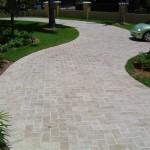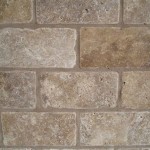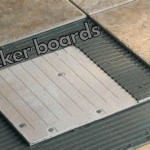Can You Lay Outdoor Porcelain Tiles On Sand And Cement?
Outdoor porcelain tiles are a popular choice for patios, pool decks, and other outdoor spaces. They are durable, low-maintenance, and come in a wide variety of styles. However, a common question arises when choosing a substrate for these tiles: can they be laid directly on sand and cement? While it might seem like a simple and cost-effective solution, there are several factors to consider before embarking on this approach.
The Pitfalls of Sand and Cement As a Base
Laying outdoor porcelain tiles directly on sand and cement is not recommended for several reasons. Primarily, sand and cement lack the structural integrity and stability required to support the weight and movement of tiles. The inherent instability of this base can lead to a host of problems:
- Tile Movement and Cracking: Sand and cement are susceptible to settling and shifting, particularly in areas subject to weather fluctuations. As the base moves, tiles laid directly on top will move with it, potentially cracking or dislodging.
- Uneven Surface: The inconsistency of sand and cement will result in an uneven surface, impacting the smooth and level installation of the tiles. This unevenness can cause tripping hazards and aesthetic flaws.
- Water Accumulation: Sand and cement are porous materials that can absorb and retain water. This can lead to moisture problems under the tiles, potentially causing mold growth and structural issues.
- Lack of Drainage: The sand and cement mixture lacks adequate drainage, allowing water to pool beneath the tiles. This trapped water can freeze during cold weather, leading to frost heave that can damage the tiles and the base.
The Importance of a Solid Foundation
To ensure a durable and aesthetically pleasing installation, it's essential to prioritize a solid foundation for your outdoor porcelain tiles. This foundation must be strong, level, and capable of handling the weight and movement of the tiles. Here are some suitable options:
- Concrete Slab: A concrete slab is the most recommended and robust base for outdoor porcelain tiles. It provides a strong, level, and durable surface that can withstand heavy foot traffic and temperature changes. The slab should be properly reinforced and have a slight slope for drainage.
- Mortar Bed: A mortar bed, consisting of a mixture of cement, sand, and water, can be applied over a compacted gravel base. This provides a stable and level surface for tile installation but requires skilled craftsmanship to ensure proper drainage and stability.
- Tile Backer Board: Tile backer board, a cement-based panel, is another suitable option. It offers excellent moisture resistance and provides a rigid surface for tile installation, making it particularly suitable for areas prone to water exposure.
Alternatives to Direct Laying on Sand and Cement
For those who prefer a simpler solution, there are alternative methods to laying tiles on sand and cement that minimize potential issues. These options include:
- Using a Paver Base: While not ideal for large areas, using a paver base can be an effective approach for smaller projects. Pavers provide a stable and level platform, but it's essential to select pavers that are suitable for the weight of the tiles and the expected foot traffic.
- Adding a Layer of Mortar: Laying a thin layer of mortar over the sand and cement before installing the tiles can provide some stability and improve drainage. However, this method should be used with caution, as it doesn't guarantee the same level of stability as a dedicated base.
By understanding the risks associated with laying outdoor porcelain tiles directly on sand and cement, you can make informed decisions about your installation. Investing in a strong and stable foundation will ensure the longevity and aesthetic appeal of your outdoor space, saving you from costly repairs and replacements in the future.
%202022-1.jpg?strip=all)
How To Lay Porcelain Patio Paving Pavestone Natural Stone For Gardens And Driveways

Why You Shouldn T Fix External Porcelain Tiles Into A Wet Bed Htw Ltd

A Guide To Laying Porcelain Paving All Your Need Know

Our Guide On How To Lay Porcelain Paving Forest Stone

Laying Porcelain Tiles Outside Tools And Best Practices

Sand Set Pavers For Driveways Porcelain Paver Center

The Ultimate Guide To Porcelain Paving Slabs Awbs
%202022-6_2.jpg?strip=all)
How To Lay Porcelain Patio Paving Pavestone Natural Stone For Gardens And Driveways

Porcelain Paver Backyard A Guide For Outdoor Tiles Stone Tile Depot

How To Lay Porcelain Slabs Tips For Laying London Stone
Related Posts









%202022-1.jpg?strip=all)















